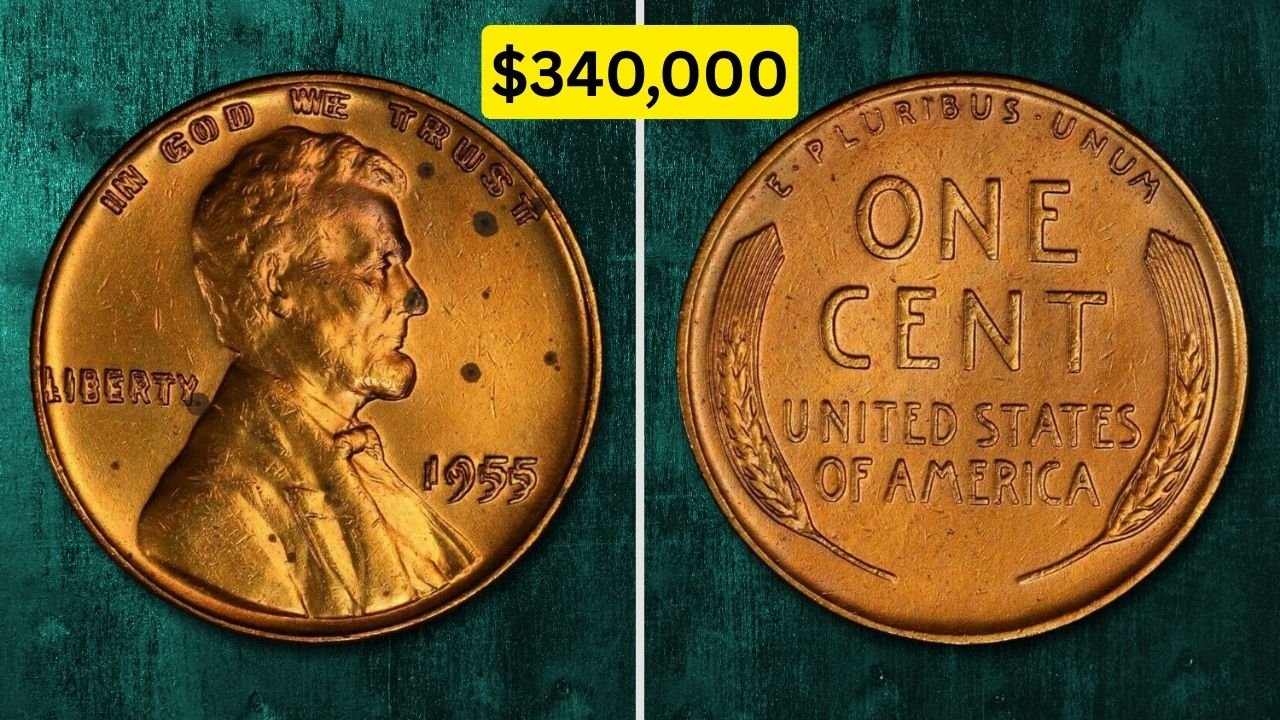A Lucky Find in a Café
A single penny, dropped into a tip jar at a small Midwest café, turned out to be a life-changing discovery. In 2024, an employee noticed something odd about a penny’s lettering while sorting tips. The date “1955” and words “LIBERTY” and “IN GOD WE TRUST” looked doubled, a clear sign of the famous 1955 Doubled Die Lincoln Penny. This rare coin, created by a minting error at the Philadelphia Mint, was authenticated and sold at auction for an astonishing $340,000. The find has sparked excitement among coin collectors and everyday people alike, proving treasures can hide in plain sight.
The Minting Mistake
The 1955 Doubled Die Penny was born from a mistake during production at the Philadelphia Mint. A die, used to stamp the coin’s design, was misaligned during its second impression, causing a doubled effect on the date and inscriptions. Unlike most mint errors, this doubling is bold and visible without a magnifying glass. About 20,000 to 24,000 of these coins were released into circulation by accident during one night shift. The mint decided not to recall them, as it would have meant melting millions of pennies. Today, only about 10,000 to 15,000 are believed to still exist.
Why It’s Worth So Much
The coin’s value comes from its rarity and fame. With so few surviving, collectors are eager to own one. The 1955 Doubled Die Penny is a star in the Lincoln penny series, loved for its dramatic error. In good condition, these coins can sell for thousands, but top-quality ones fetch much more. The tip jar penny, graded in excellent condition, sold for $340,000, though some have reached over $1 million at auction. The table below shows typical values based on condition.
| Condition | Estimated Value |
|---|---|
| Good (G-4) | $1,000 – $3,000 |
| Mint State (MS-64) | $50,000 – $340,000 |
Spotting the Real Deal
Fake versions of the 1955 Doubled Die Penny are common due to its high value. Counterfeiters try to mimic the doubling, but true examples have clear, rounded doubling on the date, “LIBERTY,” and “IN GOD WE TRUST.” A similar but less valuable coin, known as the “Poor Man’s Doubled Die,” shows blurry doubling from worn dies. Collectors should have coins checked by trusted grading services like PCGS or NGC to ensure they’re real. This step is crucial before spending big money on a supposed find.
How to Identify a 1955 Doubled Die Penny
To spot a real 1955 Doubled Die Penny, check these features:
- Look for strong doubling on “LIBERTY,” “IN GOD WE TRUST,” and “1955.”
- Doubling should be clear and separated, not blurry.
- Use a magnifying glass to confirm details if unsure.
- Avoid cleaned or damaged coins, as they’re worth less.
| Identification Tip | Why It Matters |
|---|---|
| Check for clear doubling | Confirms it’s not a fake |
| Get professional grading | Protects against costly scams |
The Collecting Craze
Coin collecting is booming, thanks to online platforms and social media. Stories like the tip jar penny inspire new collectors to hunt for rare coins. The 1955 Doubled Die Penny is especially popular because it’s tied to a real-life treasure hunt. Many start with Lincoln pennies since they’re easy to find and collect. Online forums and coin shows help collectors share tips and show off finds, keeping the hobby alive and exciting for all ages.
A Modern Treasure Hunt
The story of a $340,000 penny found in a tip jar shows how a small coin can hold huge value. The 1955 Doubled Die Penny remains a legend in numismatics, blending history, luck, and the thrill of discovery. While finding one in change is rare, the possibility keeps collectors searching. This coin’s journey from a café to a high-stakes auction reminds us that everyday moments can lead to extraordinary finds, making coin collecting a hobby full of surprises.
